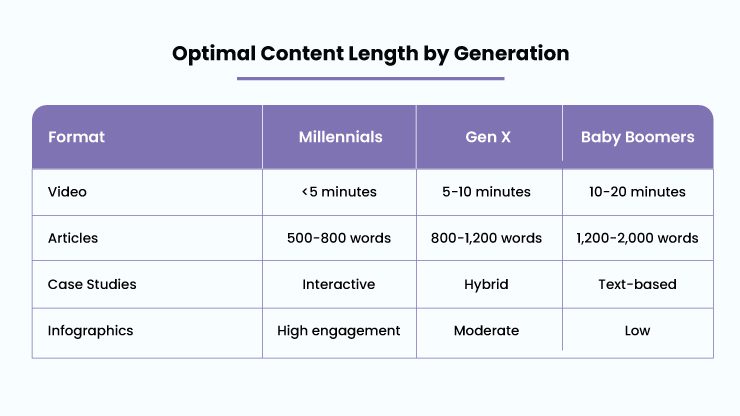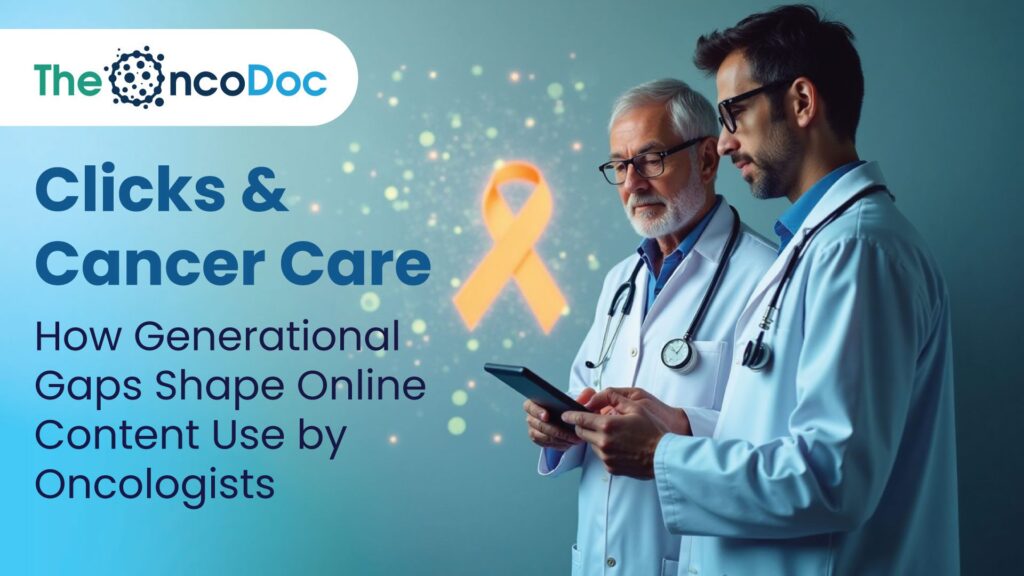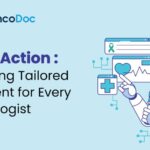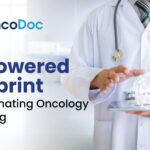Introduction
The field of oncology has seen a remarkable shift in the digital era. With the rapid pace of advancements in cancer research and treatment options, oncologists are under more pressure than ever to keep up with the latest breakthroughs. This ongoing need for learning has turned digital content consumption into a vital part of today’s oncology practice.
Recent statistics from the American Medical Association (2024) show that a staggering 93% of oncologists now depend on digital platforms for at least some of their professional education and clinical decision-making. However, there are notable generational differences in how doctors access, process, and utilize this information.
Recognizing these generational preferences is essential for:
- Medical education providers creating CME content
- Pharmaceutical companies sharing updates on treatment advancements
- Healthcare technology firms developing clinical tools
- Hospital systems rolling out training programs
The Changing Landscape of Medical Information Consumption
In the past, medical education was heavily reliant on:
- Print journals and textbooks
- In-person conferences and grand rounds
- Peer consultations through phone calls or face-to-face meetings
Today’s digital landscape provides:
- Instant access to worldwide research databases
- Interactive learning modules based on real cases
- Real-time updates on clinical trials and drug approvals
- Virtual tumor boards and peer networks
A 2024 study published in JCO Clinical Cancer Informatics found that:
- 78% of oncologists under 40 use digital tools daily for their clinical decisions
- 62% of oncologists over 55 still prefer print journals for in-depth reading
- 45% of all oncologists now take part in online tumor boards
“The challenge isn’t access to information- it’s curating the right information in the right format at the right time.”
Generational Differences in Content Consumption
Demographic Breakdown of U.S. Oncologists (ASCO 2024 Workforce Report)
- Baby Boomers (1946-1964): 28% of practicing oncologists
- Generation X (1965-1980): 45% of practicing oncologists
- Millennials (1981-1996): 27% of practicing oncologists

Key Observations:
- Mobile-first mentality dominates among younger oncologists
- Hybrid consumption is common among Gen X practitioners
- Traditional formats remain important for senior clinicians


Engagement Metrics Across Platforms
Click-Through Rates:
- Email newsletters: Boomers 42%, Millennials 28%
- Push notifications: Millennials 38%, Boomers 12%
- Social media links: Millennials 52%, Boomers 8%
Time Spent Per Session:
- Journal websites: Boomers 8.2 minutes, Millennials 3.1 minutes
- Medical apps: Millennials 6.7 minutes, Boomers 2.3 minutes
- Learning modules: Gen X 9.4 minutes, Millennials 7.2 minutes
Barriers to Digital Adoption
Common Challenges Reported
1. Among Baby Boomers:
- Information overload (68%)
- Difficulty assessing source credibility (52%)
- Technology interface challenges (47%)
2. Among Millennials:
- Too much low-quality content (72%)
- Lack of time for deep reading (65%)
- Preference for visual over text (58%)
The Future of Oncology Content Consumption
Emerging Trends
- AI-Powered Personalization: Machine learning algorithms curating content based on practice patterns
- Microlearning Modules: Bite-sized educational content for busy clinicians
- Augmented Reality: Visualizing complex cancer biology and treatment mechanisms
- Voice-Activated Search: Hands-free information retrieval in clinical settings
Recommendations for Content Providers
1. Develop Generation-Specific Content Strategies
- For Millennials: Mobile-optimized, visually rich, snackable content
- For Boomers: Comprehensive, well-structured, printable materials
- For Gen X: Hybrid approaches with multiple access options
2. Implement Multi-Channel Distribution
- Combine email, app notifications, and social media
- Offer both real-time updates and in-depth resources
- Provide multiple format options for the same content
3. Enhance Credibility Indicators
- Clear authorship and peer-review status
- Conflict of interest disclosures
- Citation of primary sources
4. Optimize for Clinical Workflow Integration
- Point-of-care accessibility
- EHR integration capabilities
- Quick reference tools
Conclusion: Bridging the Generational Divide
The digital transformation in oncology is a double-edged sword, bringing both hurdles and exciting possibilities for a diverse group of physicians. Millennial oncologists tend to lean towards engaging, mobile-friendly content, while their Baby Boomer counterparts often stick with more traditional, detailed formats. Meanwhile, Generation X doctors find themselves somewhere in between, making use of both classic and contemporary media.
To create successful digital strategies, it’s crucial to recognize these generational differences and seek common ground in areas like:
- High-quality, evidence-based content
- Clinical relevance
- Time efficiency
- Smooth integration into everyday practice
Platforms that can effectively cater to these varying preferences, such as Hidoc, which merges rigorous medical information with modern digital delivery, are ideally suited to meet the changing needs of oncologists at every stage of their careers.
“The best digital solutions don’t require generations to change; instead, they adapt to the preferences of each generation while upholding scientific integrity and clinical usefulness.”
References:
- American Medical Association. (2024). Digital Health Trends in Specialty Medicine.
- ASCO. (2024). Oncology Workforce Census Report.
- JCO Clinical Cancer Informatics. (2024). Digital Consumption Patterns in Oncology.
- Manhattan Research. (2024). Physician Digital Behavior Study.
- Pew Research Center. (2024). Technology Adoption Across Generations.
The Oncodoc team is a group of passionate healthcare and marketing professionals dedicated to delivering accurate, engaging, and impactful content. With expertise across medical research, digital strategy, and clinical communication, the team focuses on empowering healthcare professionals and patients alike. Through evidence-based insights and innovative storytelling, Hidoc aims to bridge the gap between medicine and digital engagement, promoting wellness and informed decision-making.



